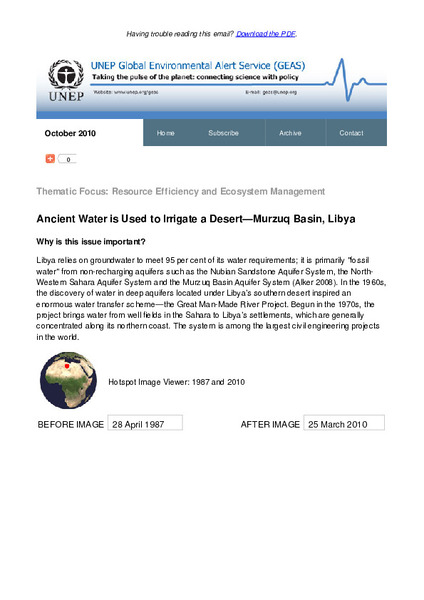| dc.contributor | Science Division | en_US |
| dc.contributor.author | United Nations Environment Programme | en_US |
| dc.coverage.spatial | Libya | en_US |
| dc.date.accessioned | 2022-10-12T09:20:50Z | |
| dc.date.available | 2022-10-12T09:20:50Z | |
| dc.date.issued | 2010-10 | |
| dc.identifier.uri | https://wedocs.unep.org/20.500.11822/40790 | |
| dc.description | Libya relies on groundwater to meet 95 per cent of its water requirements; it is primarily "fossil water" from non-recharging aquifers such as the Nubian Sandstone Aquifer System, the North-Western Sahara Aquifer System and the Murzuq Basin Aquifer System. | en_US |
| dc.format | Text | en_US |
| dc.language | English | en_US |
| dc.relation.ispartof | UNEP Global Environmental Alert Service (GEAS) | en_US |
| dc.rights | Public | en_US |
| dc.subject | Libya | en_US |
| dc.subject | irrigation | en_US |
| dc.title | Ancient Water is Used to Irrigate a Desert—Murzuq Basin, Libya - UNEP Global Environmental Alert Service (GEAS) October 2010 | en_US |


